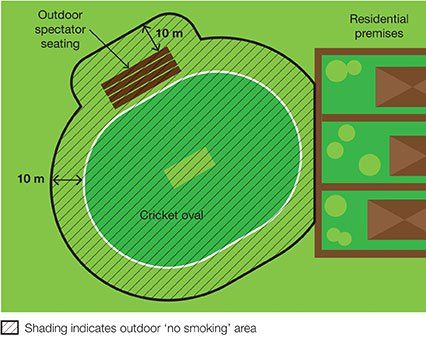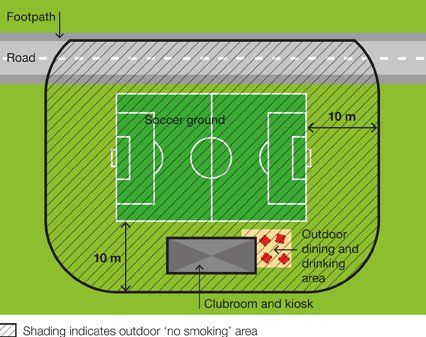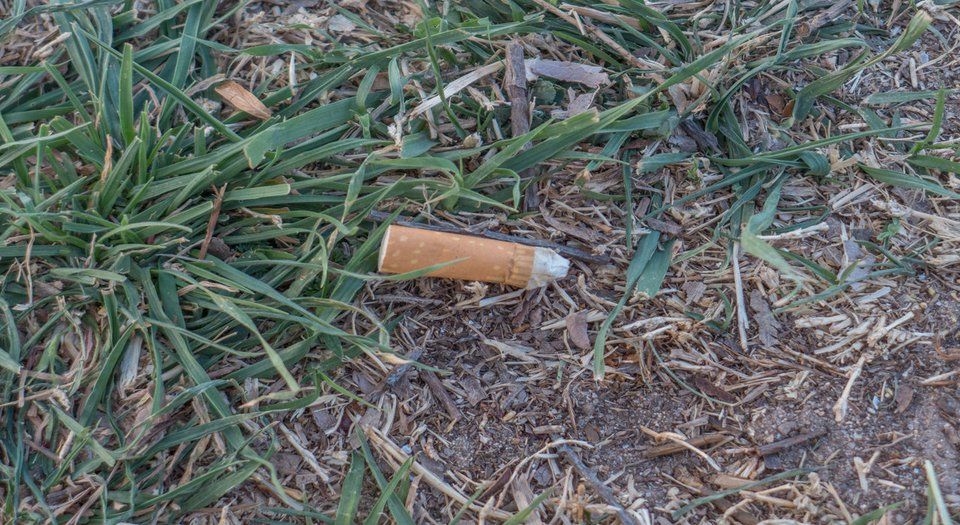Why sporting clubs should go smokefree
Tobacco and sport don’t mix. Going smoke free is one of the healthiest messages a sporting club can share with its community. Outdoor smokefree areas make smoking less visible and less socially acceptable and provide a healthy family friendly environment.
Smoking and the law
Every State and Territory have different approaches for managing smoking in outdoor areas. Visit the Tobacco in Australia website for a summary of smokefree legislation across Australian states and territories.
For example, in Victoria, smoking is banned within 10 metres of an outdoor public sporting venue during organised underage sporting events and training sessions. The ban applies to within 10 metres of outdoor spectator seating as well as outdoor dining and drinking areas. This legislation took effect from 1 April 2014.
A ‘sporting venue’ includes:
- a playing field
- a track
- an arena
- a court or rink
- any permanently or temporarily erected public seating at the venue
- any seating, marshalling area, warm-up area, podium or other part of the venue reserved for the use of competitors or officials
- any part of the venue used to conduct the actual organised underage sporting event.
For more information about the ban on smoking during organised underage sporting events in Victoria, visit the Victorian Department of Health’s Tobacco Reforms website for fact sheets.
If you are from another state or territory, we recommend consulting with localised advice for information on the smokefree laws for organised underaged sporting events in your state or territory.

The Victorian Government has also passed laws which:
(a) Ban smoking in outdoor dining areas (which may include sporting club canteens and kiosks); and
(b) Regulate the sale and use of electronic cigarettes, including banning the use of electronic cigarettes in all legislated smokefree areas (such as outdoor public sporting venues during underage sporting events).

Learn more about your state or territory's smoking laws here.
Role modelling
One of the reasons young people start smoking is tied to the smoking behaviour of the important adults in their life. Children learn from and imitate what they see. Many young people hold parents, teammates and coaches in high esteem and smoking around children sends the message that smoking is okay. Prohibiting smoking when children are around helps to remove the social norm of smoking and helps to discourage children and young people from taking up smoking.
Secondhand smoke and health
Secondhand smoke causes early death and disease in children and in adults who do not smoke. The more secondhand smoke to which you are exposed, the higher your risk of disease. There is no known level of exposure to secondhand smoke that is free of risk.
Secondhand smoke causes a number of diseases and conditions including:
- heart disease
- stroke
- lung cancer
- irritation of the eyes and nose.
In children and infants, exposure to secondhand smoke can cause:
- bronchitis
- pneumonia
- middle ear disease
- worsening of asthma symptoms
- poorer lung function
- respiratory symptoms such as cough, wheeze, phlegm and breathlessness.
Exposure to secondhand smoke in outdoor areas
There is now a growing body of evidence that demonstrates that outdoor secondhand smoke levels can be comparable to indoor levels under certain conditions. A study which measured levels of cigarette smoke in a variety of outdoor locations showed that a non-smoker sitting near a person smoking in an outdoor area could be exposed to similar levels of cigarette smoke to those found in an indoor pub where smoking is allowed. Exposure to secondhand smoke increases when people are under an overhead cover, and as the number of nearby people who are smoking increases. Therefore, in outdoor areas where people tend to gather, secondhand smoke may be a potential health risk to people who don't smoke.

Impact on people who smoke
There is evidence to suggest that smoking bans support people who smoke who are trying to quit as well as reduce their overall cigarette consumption. People trying to quit often have cravings when they are around other people who are smoking. Smokefree areas remove these smoking cues for people trying to quit or those who have already quit.
Environmental impacts
Cigarette butts are consistently one of the most common items found during Clean Up Australia Day. Approximately 7 billion cigarettes are littered in Australia each year. Cigarette butts negatively impact the appearance of outdoor areas and also cause harm to the environment from the leaching of toxic chemicals. Outdoor smoking bans may help to reduce the amount of cigarette butt litter and provide a substantial cost saving through reduced clean-up costs and reduced fire risk. Discarded cigarette butts pose a risk to children’s health due to swallowing discarded cigarette butts, which has the potential to cause vomiting and other symptoms of nicotine poisoning.

Community support
There is strong public support in Australia for outdoor smokefree areas.
It is important to note that only around 11% of Australians smoke. By implementing smokefree policies, sporting clubs are meeting the needs of the majority of their members and their families.
Now that you have learnt about the benefits going smokefree can have on your club members, players and spectators, view how to create a smokefree sporting club and Going Smokefree: A Guide for Sporting Clubs.
This content is taken from Victorian sources. While it could be applied to all Australian States and Territories, to ensure accuracy we recommend consulting with localised advice.
